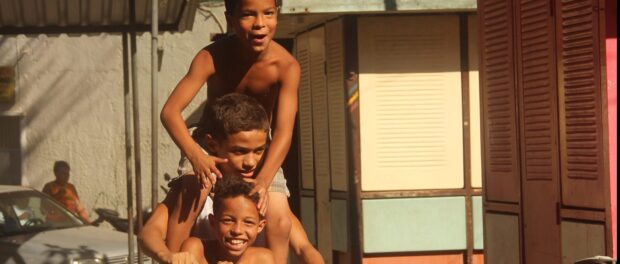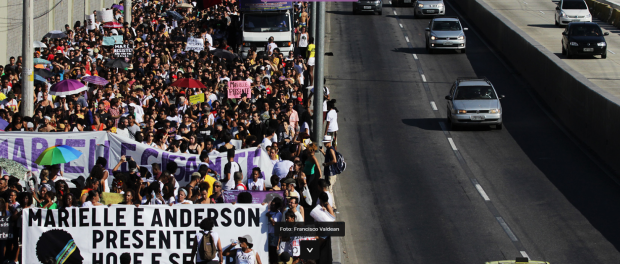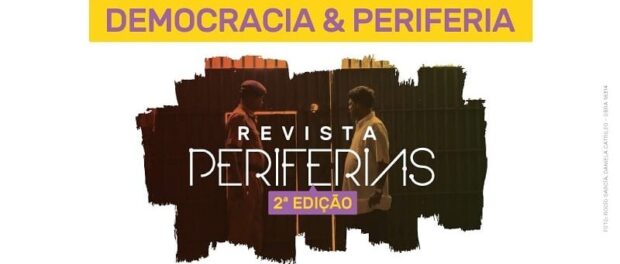Role of Peripheries in Democracy is Focus of the Second Edition of the Peripheries Journal
Published by the Maria and João Aleixo Institute (IMJA), a knowledge production institute that aims to break with the formalism and hierarchy of traditional academic institutions, Peripheries Journal is a bi-annual publication guided by the “Paradigm of Potency” of peripheries around the world. This paradigm was the topic of the journal’s first edition, published in May. The topic of the second edition, “Democracy and the Periphery,” comes at a time of profound challenges for Brazilian democracy while also resonating around the world. IMJA is based in the Maré favela complex in Rio de Janeiro’s North Zone.
In addition to contributions from Rio de Janeiro, this edition includes articles from Belém do Pará (in the North of Brazil), as well as India, Pakistan, Ireland, Turkey, France, Chile, Palestine, Spain, and Argentina. Jailson de Souza e Silva, founder of the Favelas Observatory and director of IMJA, posits the journal as a form of political and aesthetic contestation. “It’s a new way of viewing peripheries and favelas, seeing these territories not only through the lens of what’s characterized as ‘absent’ or ‘lacking’—which is the traditional approach through which mainstream media and the dominant classes engage with these spaces—but rather based on their assets: their achievements, inventiveness, beauty, and creativity. [But it also offers] the possibility of experimenting with different languages, of knowing what is going on in peripheries around the world to which we don’t have access.” Yet more, the journal is published in four languages: Portuguese, English, Spanish, and French. According to Silva, the next frontier is Arabic, to break past publication solely in Western languages.
At the Journal’s launch, Henrique Silveira from Casa Fluminense elaborated: “Speaking of democracy in the periphery, we must constantly ensure that the inventiveness originating from the periphery is recognized, without losing sight of the issue of racism.”
In the contribution to the journal by Catalytic Communities‘ public policy coordinator, Luisa Fenizola, we discussed the ways by which peripheries work to strengthen and realize a democracy that, like public services, reaches residents imperfectly and selectively. Thus, in the face of democracy’s selectivity, we chose to highlight a series of initiatives that demonstrate how, in practice, individuals and groups in favelas are fighting for increased representation, greater respect for human and constitutional rights (not only the right to life, but also freedom of movement and rights to culture and education), and more participatory forms of government.

Everyone “sees the periphery as a manifestation of social inequality. Where is the city to be found—in favelas or in Barra da Tijuca [a wealthy, segregated neighborhood of gated condominiums]? Barra has more of the urbs—the government installed more facilities there—but the city is not more present there. When we think about the polis, about dimensions of sociability and inventiveness, the city exists in its favelas. There is much more vitality there,” Silva stated. “In physical geography, the city is singular. In human geography, it’s full of contradictions. There aren’t two cities—there are myriad. Thinking across these different scales enables us to place ourselves at the forefront—to place the periphery at the center,” Eduardo Alves, also of the IMJA, concluded.
Don’t miss our article titled “The Role of Peripheries in Democracy” by Catalytic Communities’ Luisa Fenizola.
And check out the second edition of Peripheries here.
Peripheries is accepting submissions on the topic of “Alternative Experiences of the Peripheries” for its third edition through March 2019.
For the full article on which this post is based click here.


